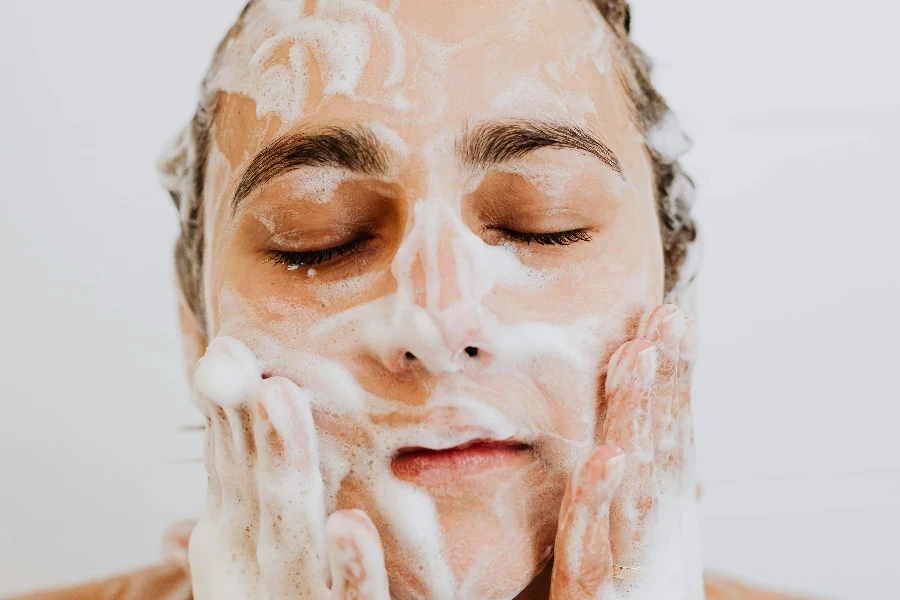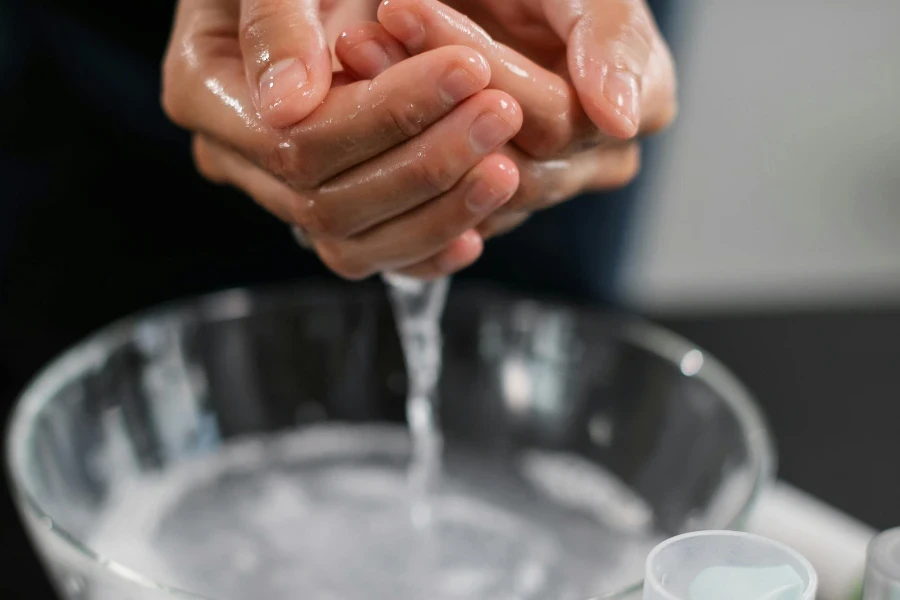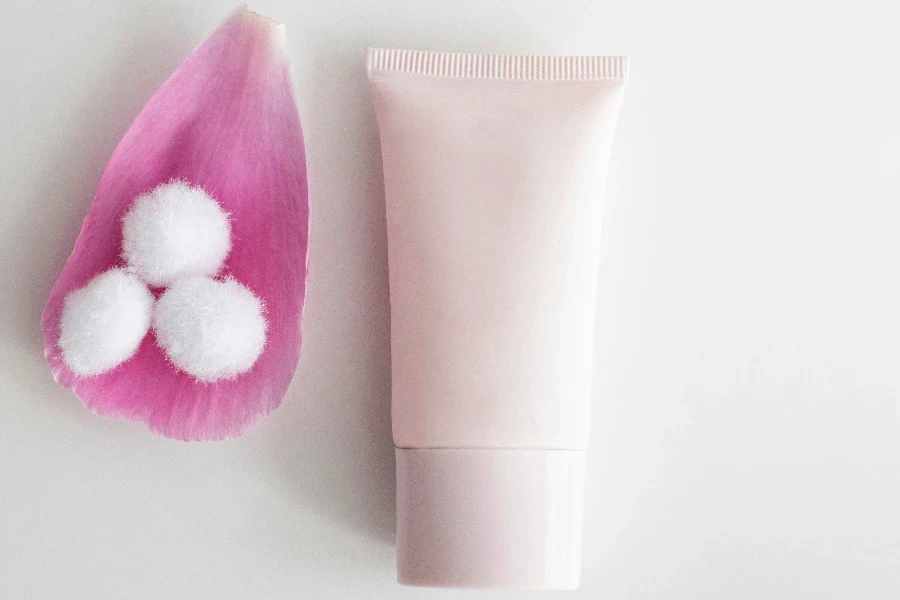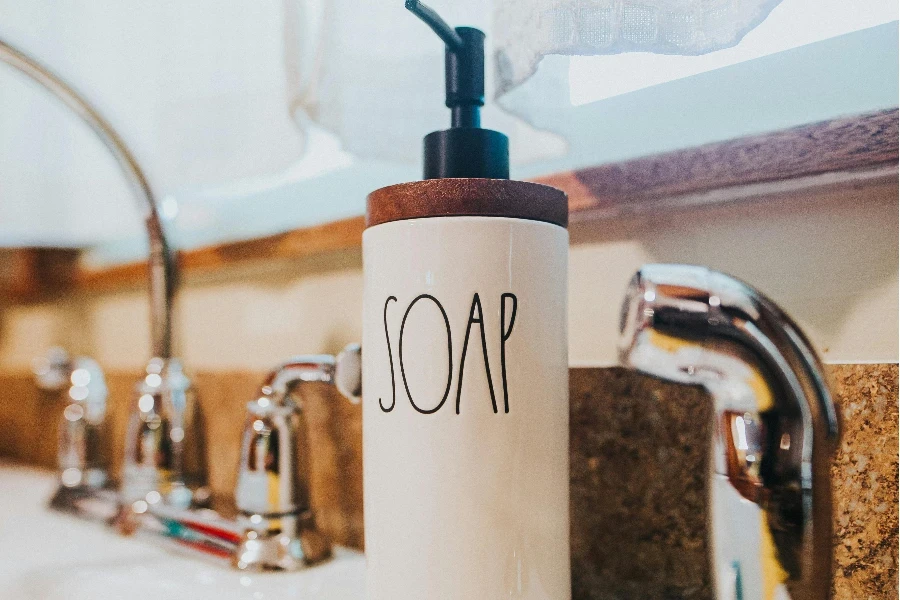Introduction: In the quest for radiant, healthy skin, an exfoliating face wash plays a pivotal role. By sloughing away dead skin cells, it reveals the smoother, clearer skin beneath. This article delves into the essential aspects of exfoliating face washes, guiding you through their benefits, types, how to use them effectively, considerations for sensitive skin, and tips for integrating them into your skincare routine.
Table of Contents:
– The transformative benefits of exfoliating face wash
– Understanding the types of exfoliants
– How to use an exfoliating face wash effectively
– Exfoliating tips for sensitive skin
– Integrating exfoliating face wash into your skincare routine
The transformative benefits of exfoliating face wash

Exfoliating face washes are more than just cleansing agents; they are transformative tools for the skin. Regular exfoliation removes the outer layer of dead skin cells that can clog pores and leave the skin looking dull. This process not only enhances the skin’s appearance by revealing the fresh cells underneath but also improves the effectiveness of other skincare products by allowing them to penetrate deeper. Additionally, exfoliation can help to minimize the appearance of pores and reduce the occurrence of breakouts, making it a critical step in any skincare regimen.
The benefits of incorporating an exfoliating face wash into your routine extend beyond immediate visual improvements. Over time, consistent exfoliation can stimulate collagen production, which is crucial for maintaining the skin’s elasticity and firmness. This can lead to a reduction in fine lines and wrinkles, contributing to a more youthful complexion. Furthermore, by keeping the pores clear, exfoliating face washes can also prevent the buildup of oil and bacteria, reducing the likelihood of acne and skin irritations.
Understanding the balance is key when it comes to exfoliation. While the benefits are numerous, over-exfoliation can lead to skin sensitivity, dryness, and irritation. It’s important to choose a product that is appropriate for your skin type and to use it as directed. By doing so, you can enjoy the transformative benefits of exfoliating face washes without compromising your skin’s natural barrier.
Understanding the types of exfoliants

Exfoliating face washes can be categorized into two main types: physical and chemical exfoliants. Physical exfoliants work by using small, gritty particles to manually remove dead skin cells. These can include ingredients such as jojoba beads, sugar, or finely ground nut shells. While effective, physical exfoliants should be used with caution, as overly abrasive particles can cause micro-tears in the skin.
Chemical exfoliants, on the other hand, utilize acids or enzymes to dissolve the bonds that hold dead skin cells together, allowing them to be washed away. Alpha hydroxy acids (AHAs), such as glycolic and lactic acid, are water-soluble and effective for surface exfoliation. Beta hydroxy acids (BHAs), like salicylic acid, are oil-soluble, penetrating deeper into the pores to remove excess sebum and dead skin cells. Enzymatic exfoliants, derived from fruits like papaya and pineapple, offer a gentler approach, breaking down dead skin cells without the need for scrubbing.
Choosing the right type of exfoliant depends on your skin type, concerns, and preferences. Those with sensitive skin may prefer enzymatic exfoliants for their gentle nature, while individuals with oily or acne-prone skin might benefit from the deeper cleansing properties of BHAs. Understanding the different types of exfoliants and how they work can help you select the most suitable exfoliating face wash for your needs.
How to use an exfoliating face wash effectively

To maximize the benefits of an exfoliating face wash, it’s crucial to use it correctly. Begin by wetting your face with lukewarm water. Apply a small amount of the exfoliating face wash to your fingertips and gently massage it onto your skin in circular motions, avoiding the delicate eye area. This process should not be rushed; take your time to ensure thorough exfoliation. Rinse with lukewarm water and pat your face dry with a soft towel.
Frequency is an important consideration when incorporating an exfoliating face wash into your skincare routine. Start with once or twice a week, gradually increasing as your skin adjusts. Pay attention to how your skin responds and adjust accordingly. Over-exfoliation can strip the skin of its natural oils, leading to dryness and irritation, so it’s important to find a balance that works for your skin.
Following up with a moisturizer is essential after exfoliating. This helps to hydrate the skin and replenish any moisture that may have been lost during the exfoliation process. For daytime use, choose a moisturizer with SPF to protect your newly exposed skin cells from sun damage.
Exfoliating tips for sensitive skin

For those with sensitive skin, exfoliation can be a double-edged sword. While it’s beneficial for removing dead skin cells and improving skin texture, it can also lead to irritation if not approached with caution. Choosing the right exfoliating face wash is the first step. Look for products specifically formulated for sensitive skin, often containing gentler, enzymatic exfoliants or very fine physical exfoliants.
When using an exfoliating face wash, be gentle. Harsh scrubbing can aggravate sensitive skin, leading to redness and discomfort. Limit exfoliation to once a week or less, depending on your skin’s tolerance, and always follow up with a soothing, fragrance-free moisturizer to help calm and protect the skin.
Listening to your skin is crucial. If you experience redness, burning, or irritation after exfoliating, take a break and allow your skin to recover. Incorporating soothing ingredients like aloe vera or chamomile into your routine can help to alleviate discomfort and restore the skin’s natural barrier.
Integrating exfoliating face wash into your skincare routine

Incorporating an exfoliating face wash into your skincare routine can significantly enhance your skin’s health and appearance. For best results, use it in conjunction with a gentle cleanser, moisturizer, and SPF during the day. Remember to adjust the frequency of exfoliation based on your skin’s needs and response to the product.
Consistency is key to seeing the benefits of exfoliation. With regular use, you can expect to see improvements in skin texture, clarity, and overall radiance. However, it’s also important to be patient; skin renewal takes time, and the benefits of exfoliation will become more apparent with continued use.
Conclusion: Exfoliating face washes offer a simple yet effective way to enhance the health and appearance of your skin. By understanding the types of exfoliants, how to use them effectively, and integrating them into your skincare routine, you can unlock the full potential of exfoliation. Remember to listen to your skin and adjust your routine as needed to maintain its natural balance and achieve a clearer, smoother complexion.




